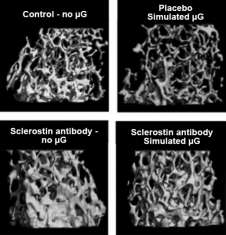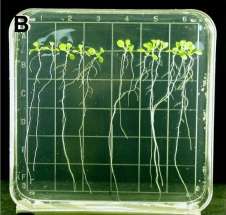Space station boosting biological research in orbit

Studying the science of biology in microgravity opens a world of possibilities! Research ranges from plant growth to cell growth and from bacterial virulence to strength in human bones. The scope of biology research provides scientists from many disciplines with opportunities to express and explore their area of interest, translating findings into treatments and applications for use on Earth and in space exploration.
Supporting this research in biological science and technology is an important part of NASA's overall mission. To that end, NASA has selected 31 investigations proposed in response to the most recent NASA Research Announcement titled "Research Opportunities in Space Biology."
These NASA-sponsored studies will help grow the collective knowledge about how biological systems adapt to space. Findings from such research add to the foundation on which other scientists and engineers can build. This can lead to approaches and countermeasures to problems confronting human exploration of space, as well as translate to new biological tools or applications on Earth.
Using 21st century biological tools, space biology scientists will examine and discover underlying mechanisms of adaptation to changes resulting from the microgravity environment, including exposure to stress and radiation. The goal is to determine genetic, cellular and organismal mechanisms that regulate and sustain growth, metabolism, reproduction and development in this altered setting. By understanding these mechanisms, these investigations could yield valuable knowledge leading to advances in areas such as agricultural production and therapeutics for treatment and prevention of diseases on Earth.

The International Space Station is equipped with a variety of multidisciplinary facilities and equipment available to support these newly selected investigations. NASA and its international partners built these capabilities, and they are available on a time-shared basis. The existing biological tools aboard the orbiting research laboratory will benefit several of the selected space biology scientists not only with research discoveries but also by eliminating time spent to certify these tools to fly in space, thus reducing the cost of the investigations.
Selected investigations will begin immediately. Fourteen ground-based studies will develop hypotheses for future testing aboard the orbiting laboratory. Nine studies will be conducted aboard the space station. Researchers new to space biology will collect preliminary data in eight proposals. For a complete list of the selected proposals, principal investigators, and organizations, refer to the Human Exploration and Operations website.
The nine space station flight investigations include four that will characterize cardiovascular, immune and reproductive system adaptation. Five others will study plant biology and microbial biology. "My hope is that the flight experiments will fly to completion within the next 2-3 years," said David Tomko, program executive for the Human Research Program and Space Biology at NASA Headquarters in Washington, D.C.
The plant investigations for space station study include topics such as Plant Mechanical Signaling During Spaceflight and Proteomics Analysis of Arabidopsis Seedlings in Microgravity. Plant signaling studies the effects of various gravity levels on the growth responses of plant seedlings. Proteomics studies the structure and function of proteins, used in this investigation to analyze the Arabidopsis thaliana seedling, a small flowering plant related to cabbage. The experiments selected for rapid turn-around flight research using plants or petri dish-based biological systems will use either the Advanced Biological Research System (ABRS) hardware or the Biological Research in Canisters-Petri Dish Fixation Unit (BRIC-PDFU) hardware already aboard the space station.
The studies selected for ground-based space biology research using cells, tissues, or animals will enhance our understanding of the effects of gravity on multiple biological systems. During the proposal process, investigators were required to demonstrate and detail a clear path from their work in labs on the ground to space flight experiments on the space station. At NASA's request, all of the ground studies selected were designed by the scientists as precursors leading to the development of space flight investigations in the near future.
These selected research proposals from 21 institutions in 13 states will be funded from a one- to four-year period and highlight NASA's continued emphasis on the importance of biology studies in space. Findings from these new investigations will help advance biology research and continue to sprout new ideas for future research on Earth and in space.
Provided by NASA

















